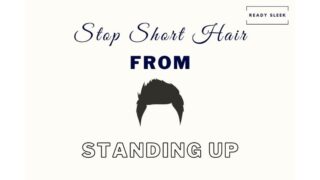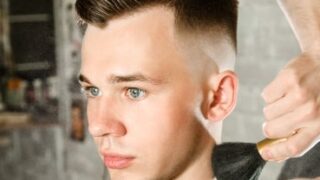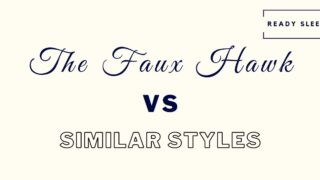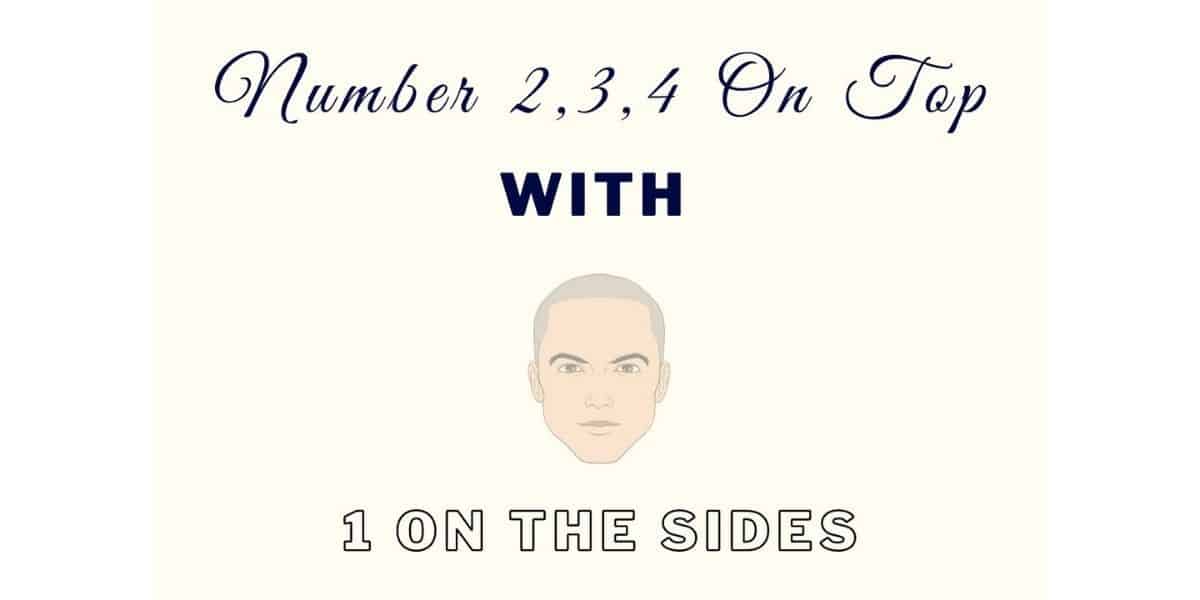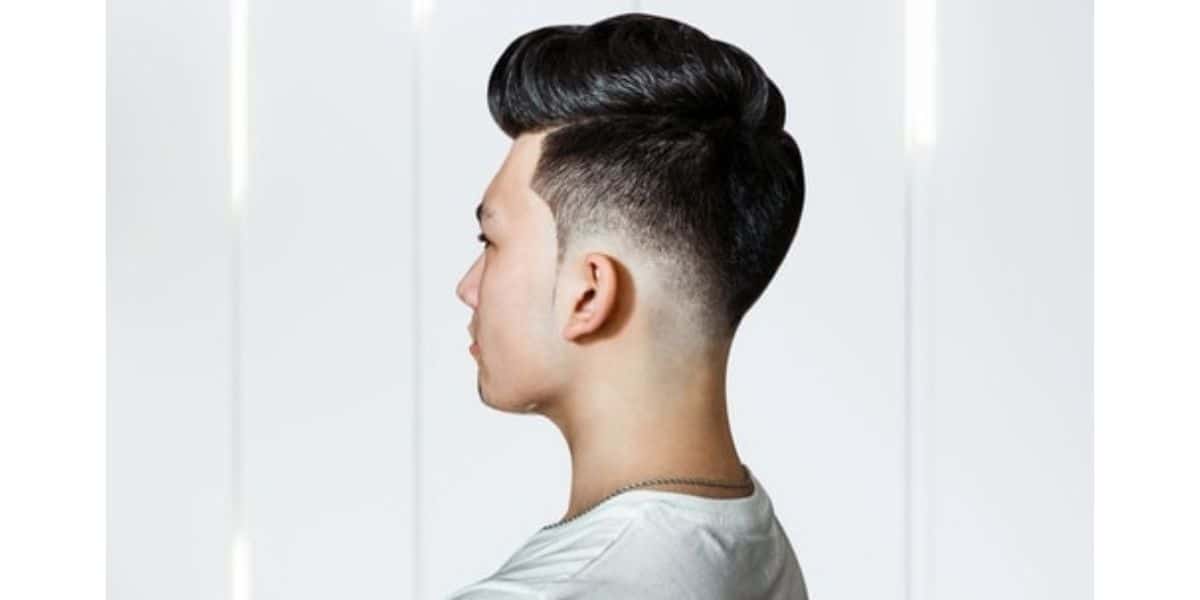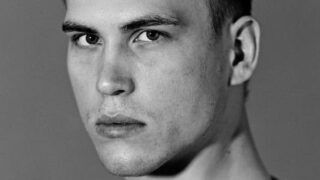Having thin hair does allow you to produce textures that are more difficult to produce with thicker hair. Plus, it’s just easier to work product into. You’re about to see some phenomenal examples of quiff styles done right.
Quiffs are great. They’re simple, subtle, and easy-to-style.
Having said that, there are so many variations out there it can be difficult to know which will suit you best.
In addition, some quiffs are so out there that it’s difficult to even know whether they should be classed as a “quiff” or not.
Essentially, a quiff is a style where the forelock (hair above the forehead) is swept up and away from the face.
Although that’s the gist, this simple style can take so many different forms and a bunch of them are possible to achieve with thin hair.
Here are the best of them.
6 Best Quiff Styles For Thin And Fine Hair
Use this as a source of inspiration. You may not fall in love with all of them, but there’s a good chance that most of them will make you want to give them a go.
1. Neatly Combed Quiff
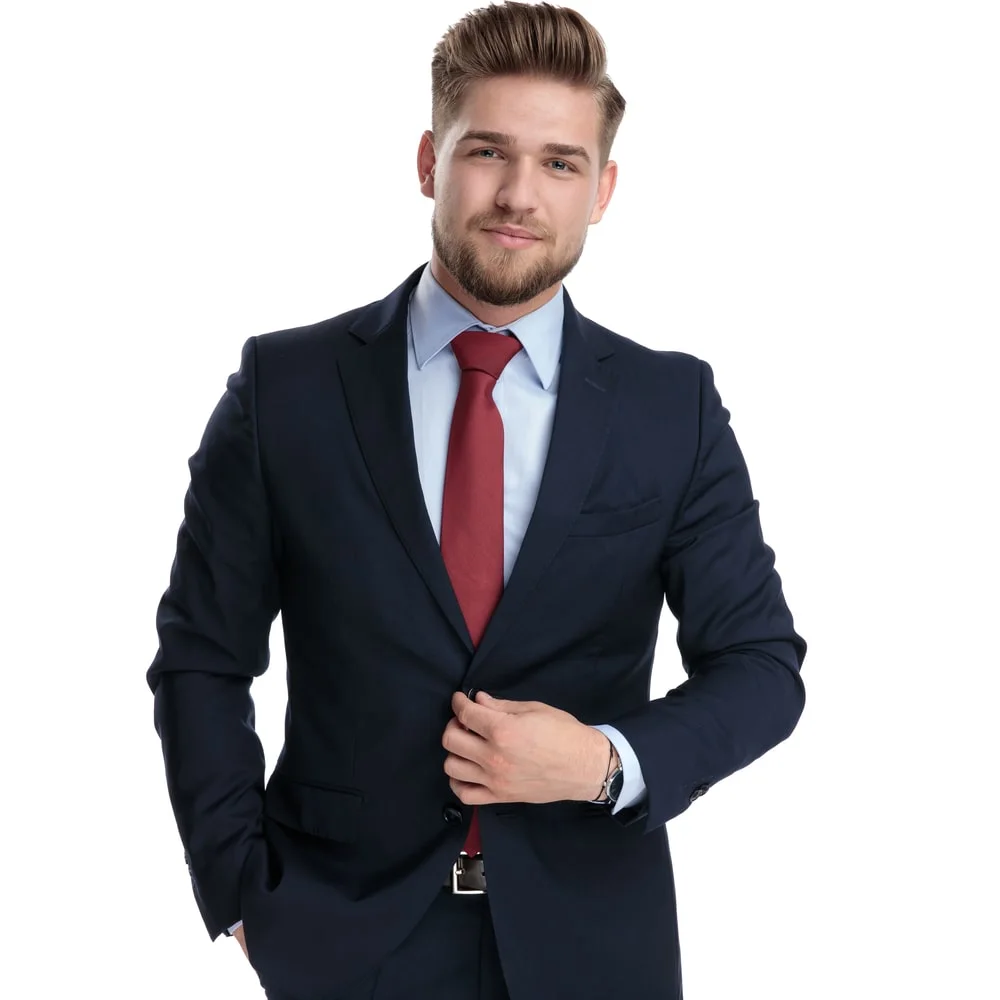
There’s something about simplicity that’s very appealing.
To get a neat and shapely quiff, it would be best to style it using a round brush or a fine-toothed comb while blow drying on medium heat.
Quiffs such as this look very intentional and suave.
There isn’t much texture or separation, but that may be exactly the look you want to achieve.
As you can see, a quiff tends to elongate the face by adding vertical height above the forehead.
Take this into consideration when deciding how tall you want your quiff to be.
If you’ve already got a fairly “long” face shape, such as oblong, rectangular, or diamond, go for a shorter quiff.
If you’ve got a rounder or “shorter” face shape such as square, style a taller quiff and use it as an opportunity to add some length.
The additional length added by the quiff in this picture is nicely contrasted and balanced by the roundness of the glasses frames.
If you do happen to wear glasses, use them to add contrast wherever possible.
2. Tousled Quiff With Mid-Fade
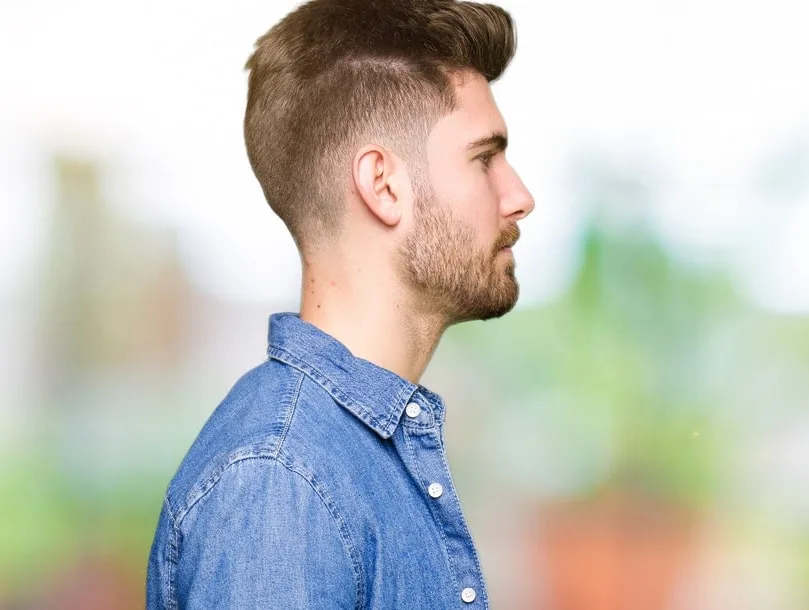
Here’s where having thin hair comes in very handy indeed.
These tousled, messy, separated textures are much easier to achieve with thin and fine hair.
Quiffs such as this are best achieved by using your fingers. There’s really no substitute for working some styling product into it using your bare hands.
Tousle and tug until you get that glorious, messy look. Finger-tousling and finger-combing is the best way to get that great textured appearance.
Blow dryers aren’t as essential to styling quiffs as they are for pompadours, for instance.
However, you may find you’re able to get the texture you’re looking for much easier with a blow dryer, so it’s definitely worth experimenting with.
Yes, even when using your fingers to style the quiff.
Men with thin hair need to be even more careful with their blow dryer. Don’t hold it any closer than 6 to 8 inches from the hair and avoid exceeding medium heat.
You don’t want to risk damaging the hair itself.
3. Tall Quiff
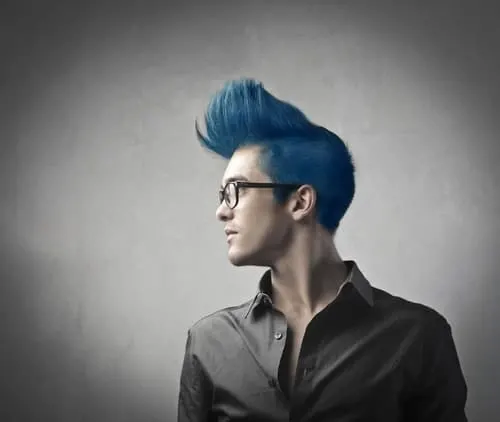
As I mentioned earlier, taller quiffs are a little harder to style with thin or fine hair.
But it’s certainly possible. You may just need some additional help.
What I’m referring to here are styling products with stronger levels of hold. This could be a pomade, clay, wax, etc.
A light layer of hairspray may also be worth trying to see if that tall quiff is more likely to stay in place.
As you can see from this picture, the tall quiff style does look great. It’s more eye-catching and attention-grabbing, which may be what you’re going for.
Once again, the round-framed glasses add a lot of balance to the elongating effect of the quiff.
4. Side Swept Quiff With Fade
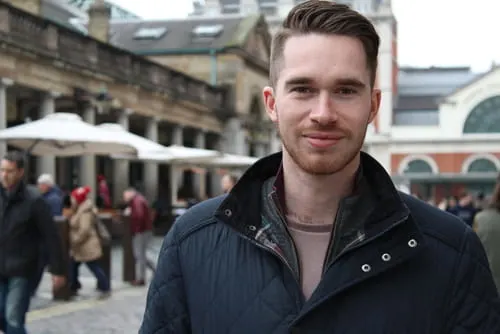
A side-swept look is a fantastic option when it comes to quiff.
They’re so easy to style with thin hair because you’ll probably find the hair has a natural tilt to one side or the other in any case.
Use this to your advantage instead of trying to fight against it.
Combing or sweeping the hair to one side often looks and feels more natural with finer hair and is easier to achieve.
You’ll probably find that you need less styling product to keep it in place as well.
You’re letting the hair fall into a position that’s natural for it while styling it into your texture of choice.
Experiment by using your fingers as well as a comb to create these waves and settle upon the texture you prefer.
5. Messy And Textured Quiff With Fade
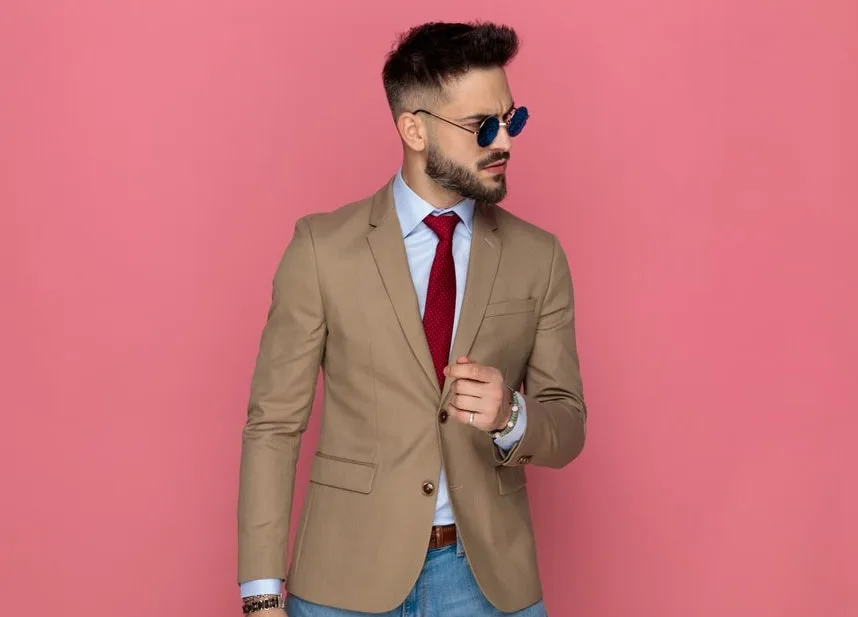
Here’s another great example of a messy and tousled quiff.
The layered, textured appearance is, once again, best produced with your fingers. There’s no substitute.
Use a blow dryer to add some volume to the forelock while working it upward and creating that fantastic separated look.
The fade here is definitely worth mentioning.
You could call it a “mid-fade” because the transition point is approximately midway between the top of the ear and the temple.
As you can see, it’s different to the undercut because there’s a gradual increase in length as you travel up the sides and back.
Just like the undercut, the short sides and back add even more prominence to the hair on top in comparison.
The quiff looks taller and draws more attention.
6. Textured Quiff With Fade And Beard

Here’s another example of a quiff style with a mid-fade. Once again, the faded sides just draw even more attention to the quiff by making it look more prominent.
This quiff style is simple – that’s the beauty of it.
It’s neat and medium-length; perfect if you’re aiming for subtlety and simplicity.
Medium-length quiffs such as this are also pretty easy to keep upright when you’ve got thin hair.
As always, the volume of the hair behind the quiff can be reduced using a blow dryer.
But let’s talk about the stubble beard. Beards are a fantastic complement to quiffs.
As you can see from this picture, they add so much definition and structure to the lower half of the face.
This is particularly useful with quiffs because the beard balances them out.
For men with rounder faces, this is a gift. You can use the quiff as well as the beard to elongate the face and create more of an oval shape if you wish to.
You don’t even need to grow a full beard. Similar effects can be achieved with stubble.
Having said that, the more length you’ve got at the chin, the more pronounced the effects will be.
Summary Of Quiff Styling Tips For Thin Hair
- Shorter quiffs may be easier to keep in place than longer quiffs when you have thin or fine hair.
- Consider lighter styling products with less shine.
- Feel free to use a blow dryer to add or reduce volume where necessary. However, excessive heat for prolonged periods of time can do some damage to thin hair.
- Experiment with using combs, brushes, and your fingers and decide which quiff texture you like best.
Conclusion
Having thin and fine hair does make it easier for you to work it the way you want.
You have a little more control. Use this to your advantage and style the perfect quiff for your specific hair and face.
As you’ve seen, there are plenty of options out there for you to try.
It’s just about finding the right one.
Experiment regularly and have fun with it.
Ready Sleek founder. Obsessed with casual style and the minimalist approach to building a highly functional wardrobe. Also a fan of classic, vintage hairstyles.

![6 Quiff Styles For Thin And Fine Hair [2023 Guide]](https://www.readysleek.com/wp-content/uploads/2021/10/neat-and-small-quiff-shutterstock-480x270.jpeg)
